The way that you grind your coffee drastically impacts everything.
Half the battle is growing and roasting; the other half is grinding and brewing.
If you’re grinding your own coffee, then you are controlling how it’s going to taste. It’s up to you if it’s good or if it’s bad enough that you won’t want to drink it.
Here, we’re going to go over every single aspect of coffee grinding, from different grinder types to how coarse your coffee grounds should be before you even think about putting them in your brew basket.
You found this article because you love coffee: the way it tastes, smells, and what it does to you when it runs through your veins.
You’re here because you want to get more flavor and a stronger brew out of your coffee beans, or you want to actually start grinding your own coffee for the first time.
Pre-ground coffee is wildly beneath fresh-ground coffee for plenty of reasons that we’ll get into in this article.
If you’re ready to learn the secrets of grinding your own coffee, then start taking notes.
If you’d like to see a graphical breakdown of the coffee grinding, we’ve got you covered:
Why Should You Grind Your Own Coffee?
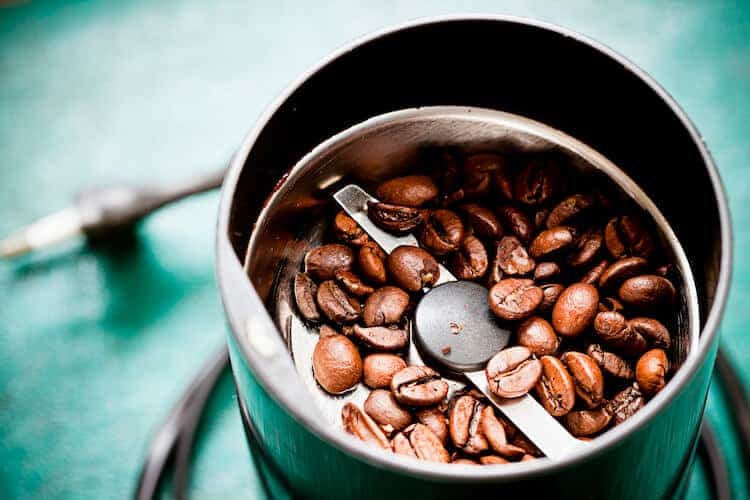
From the top down, it’s all about flavor.
Coffee beans are actually pretty delicate once they’ve been roasted; so many things can go wrong that will ruin the flavor.
When you grind your own coffee, you’re getting the freshest cup possible.
Unless you’re roasting your own coffee beans (which is doable but wildly inconvenient), the freshest cup will come from freshly ground coffee.
But why does this matter?
Picture every individual coffee bean like a mathematical equation, where you have to find the total surface area.
Without having to pull out a calculator, just think of every spot on the outside of a coffee bean. That area, or surface, is how much of the coffee bean is oxidizing.
Oxidation is what strips the freshness away from your coffee, so when you buy it pre-ground, even though it’s in a sealed bag or canister, you’re buying arguably a thousand times less surface area.
More oxidation, less flavor, all for a little convenience.
Don’t get me wrong, there are people out there who just feel like they need a cup of coffee in the morning to get them going.
If it’s for necessity, I suppose flavor and freshness don’t really factor into your decision.
But you—you’ve read this far because you love coffee because you want to find ways to make it better, bolder, and more flavorful every single time.
Benefits of Grinding Your Own Coffee at Home
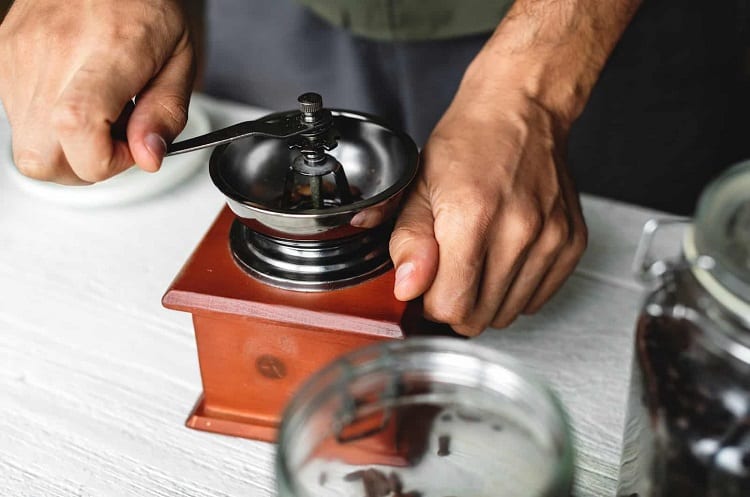
Well, now it’s time to take a good, hard look at why it’s actually beneficial to grind your own coffee.
Whether you buy the beans from a local micro-roaster or you get them from big-box retailers online, you should be grinding your own coffee.
Taste
First and foremost, it comes down to taste. It’s a hard thing to describe, but the best way I could tell you to test the taste differences for yourself is to put them into action.
Use pre-ground coffee, make a pot, add your cream and sugar, and drink about four ounces. Let it sit on your tongue for 1-2 minutes. Then do the same with freshly ground coffee.
Sip that, and tell me there isn’t a difference. There’s a scientific reason behind it as well.
Since coffee beans are genuinely nutritious, they lose some nutrients through oxidation when ground up and left to sit there.
That means antioxidants dry up, the caffeine content is lost, and B vitamins (which are found throughout all types of coffee beans) diminish.
While it seems like those are things that just sort of sit in the background, they have subtle tastes that all combine to create the flavor profile of coffee that you know and love.
So first thing’s first: if you care about how your coffee tastes and you want it to constantly be better, then you’re going to have to switch to grinding coffee on your own.
Blending
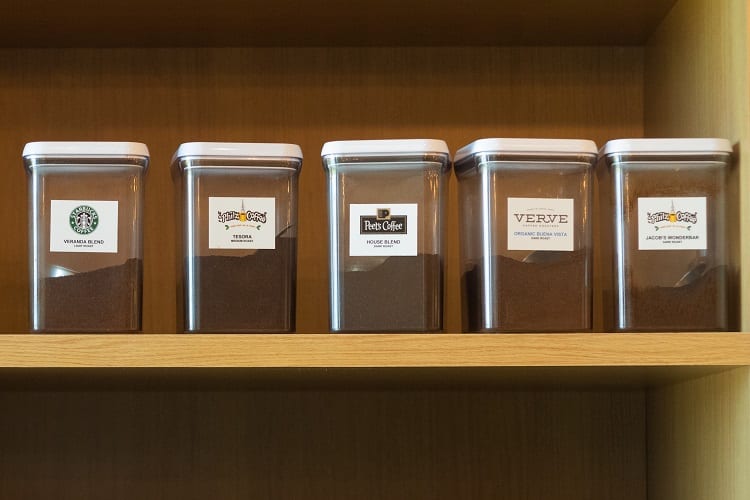
Do you want control over your coffee?
Because buying pre-ground blends doesn’t give you that control.
Sure, they might come out at the same grind size each time, and that’s important, but you can’t make consistently delicious blends unless you’re grinding it yourself.
If you decide to blend coffees together, you’re in for one heck of a ride.
There’s a seemingly endless array of possibilities that you can choose from, mixing up different bean types, roast strengths, roasted flavors, and more.
If you’re grinding your own coffee, you’d as well experiment with blending.
The main reason that people make their own blends at home is that they can mix in higher quality specialty beans with a lower quality bean to save money while also getting a decent amount of those rich flavors that they want from higher quality beans.
You can also control your caffeine content. Consider combining espresso beans, medium roast, and light roast together all in one, and grind that up.
It’s not only a unique experience, but it can boost the buzz that you get from your brew. There’s nothing wrong with optimizing your coffee for flavor and that turbo-charged effect.
Freshness
Oxidation is a problem. The irony is that coffee beans are chock full of antioxidants, but they’re mostly enacted through brewing.
When you grind coffee beans and just let the grounds sit there in a canister for three to six weeks, those antioxidants diminish. It makes everything taste stale, and flat.
Freshness and taste are different because you can taste an old coffee bean versus aged grounds.
When it comes to freshness, it’s about the aroma, it’s about how much oil is in your coffee, and so on.
You’re not going to have any margin of control over a bucket of pre-ground coffee. To have a handle on how fresh, flavorful, and beneficial your morning cup is, keep this in mind.
Health Benefits (300)
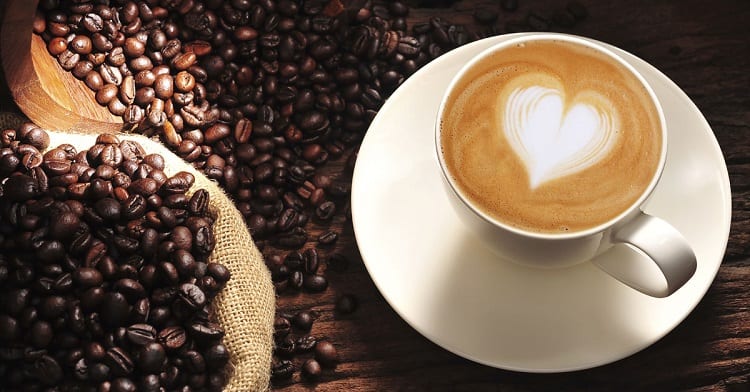
You’ll hear me talking about oxidation a lot, and it’s for good reason.
It’s what kills the benefits found in coffee.
When you grind coffee beans and let them sit there, you take away from the rich vitamin and mineral profile. Some of those include:
- Vitamin B1
- Vitamin B2
- Vitamin B3
- Vitamin B5
- Potassium
- Manganese
- Antioxidants
It’s quite ironic that with all those antioxidants, coffee oxidizes fairly quickly.
Currently, the largest source of antioxidants in the western world comes from coffee, and that’s by a huge amount.
People aren’t just out there taking antioxidant supplements as they should be.
Fewer health benefits mean your coffee is less awesome for you.
When you have two to four cups of coffee per day, you’re actually supplying your body with 44% of its daily recommended dosage of riboflavin, as well as 24% of your daily recommended dosage of pantothenic acid.
When you have a few cups, it adds up, and it can quickly become a source of consistent minerals in your diet.
However, if you’re using pre-ground coffee, there’s an average of 45% less potency in all of these benefits. If you grind it yourself, it tastes better, because it’s better for you.
Different Types of In-Home Coffee Grinders
There are just two main types of grinders, but they both come in handy for different things.
Burr grinders will be best for consistent coffee through a drip system, while blade grinders give you a hands-on approach to grinding your coffee and are best used in French presses.
Burr Grinder
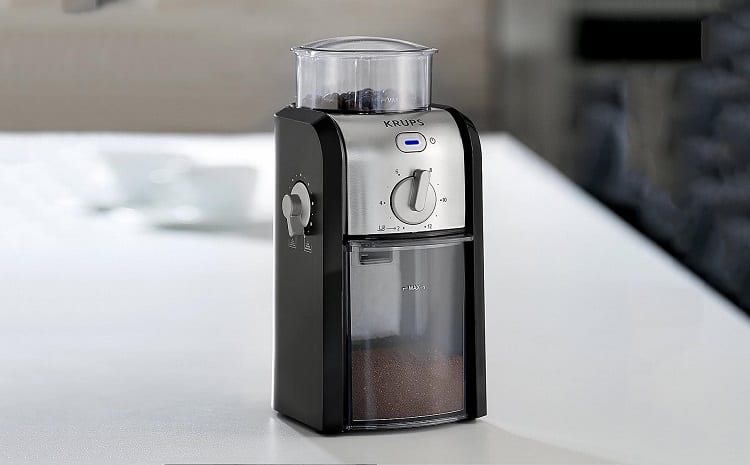
Burr grinders, sometimes referred to as mill grinders, are the main types of coffee grinders that you’ll see in the Western world.
These use different working metal parts on the inside of your unit with a present measurement of space between them, giving you a way to control the consistency of your ground size.
The beans are pressed in between these two abrasive surfaces, constantly being crushed and pressed together until they reach a specific size.
This specific size can be adjusted or altered by the grinder owner at their discretion. Once the grounds reach a certain size, they press through the grinder and land in the brew basket.
Burr grinders are primarily used for automatic coffee making systems.
You can buy two-in-one units that grind your coffee and then immediately start brewing it, and those will always use burr grinders.
The aim of the game is consistency, which is why the big QSR restaurants almost exclusively use burr grinders.
They’re automatic, they’re powerful, and they give a consistent end product nearly every single time.
Blade Grinder
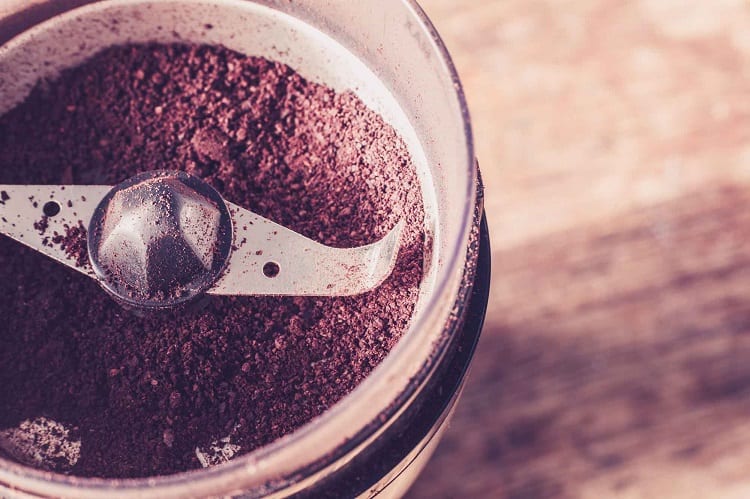
Blade grinders are generally manual coffee grinder systems that give you the ability to control the outcome of your grounds, for better or for worse.
Instead of an automatic mill with a preset amount of space between the interior surfaces, this uses one or two blades that essentially chop up your coffee grounds as if they were vegetables.
For this, the more you chop, the finer your grounds get. Blade grinders are not very consistent, which is why they’re not popular choices for large-scale coffee production.
They go hand-in-hand, as a manual method of grinding the coffee, with manual coffee makers.
If you used a blade grinder on your coffee and then tossed it into a brew basket of a drip feed system, it’s going to be a confusing experience.
Blade grinders often require more maintenance than burr grinders, though that maintenance is much less invasive and much more affordable.
Blade grinders mostly need to be sharpened in accordance with how often they’re being used and cleaned thoroughly to prevent excessive oil buildup.
This has to be done by hand. With a burr grinder, there are no blades, and you can add tablets or white rice to the grinder and clean out your system.
What Are the Different Types of Coffee Beans?
Different types of coffee beans are going to give you wildly different flavors.
The end result of these three main types of coffee beans comes from climate, the acidity in the soil, and the local farmers who have developed methods to care for these plants like nobody else.
Arabica makes up most of the world’s coffee supply, Robusta is second, and Liberian is a slim 1% of the world’s coffee (but considering how much we all drink, that’s not a bad number at all).
Let’s take a look at the primary differences between them all and determine what’s best for you.
Arabica
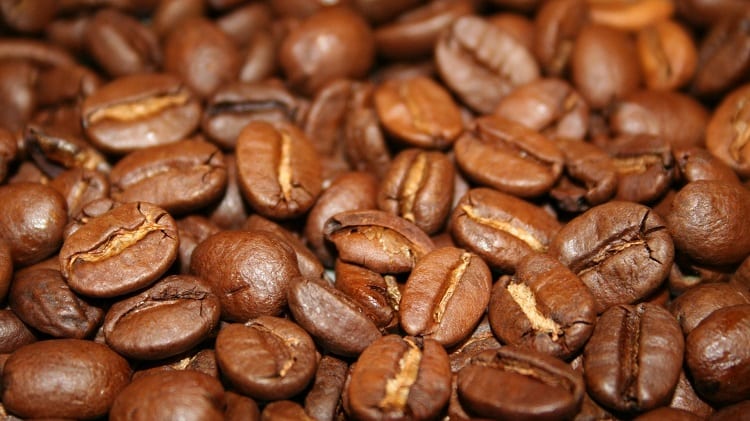
The most common type of coffee bean on the planet, Arabica coffee makes up the majority of the coffee world and accounts for a major export in Brazil’s economy each and every year.
Many arabica beans also come from Ethiopia, where the story of the first cup of coffee comes from.
Arabica can be roasted from light to dark, and can even be enjoyed as green coffee beans with a slight bit of bitterness to them.
As the main coffee that Americans drink in the western parts of the world, it’s likely the first coffee flavor that comes to your mind, even if you don’t know it yet.
Arabica coffee takes years to grow, and the plants that bear coffee cherry fruit can live for up to a hundred years, constantly supplying an annual yield.
Arabica beans are associated with smoother, more subtle tastes. There’s an enjoyable balance of nutty flavors with a lighter color when you brew it in your cup.
Despite being the world’s number one choice, Arabica coffee actually has slightly lessened health benefits compared to robusta beans, particularly the concentration of CGA.
You’ll find that arabica coffee grows in hilly areas with shade and humid temperatures.
Last but not least, Arabica beans have a stronger coffee aroma to them, whether they’ve been roasted or not.
It is more distinctly recognizable as coffee compared to robusta and Liberian beans.
Robusta
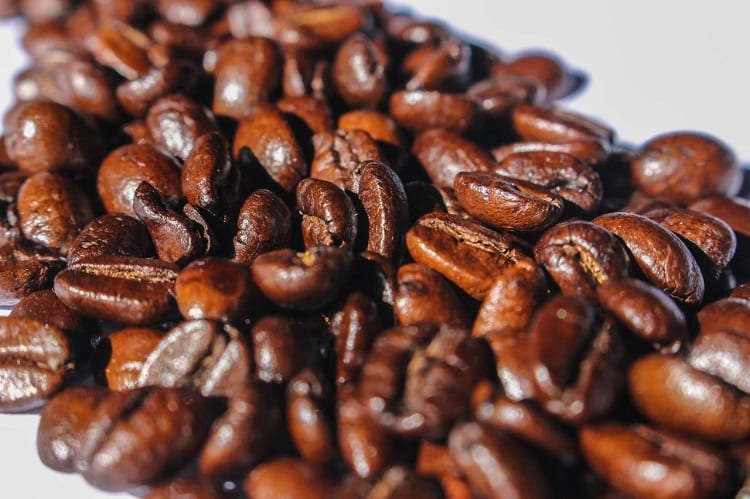
While it doesn’t hold a candle to the amount of arabica coffee that we consume, it does have a few benefits that you might find interesting.
First of all, the taste is a bit different. Light roast robusta beans will be the best bet for someone who’s coming from arabica coffee.
Robusta is generally referred to as a bolder, and sometimes more burnt blend (though it’s just the natural way that the beans taste).
Robusta beans come with twice as much caffeine as arabica, and as a result, twice as many antioxidants.
These plants are much more sustainable since they require less overall care and temperature conditions like arabica plants.
On average, these coffee canephora plants have lower acidity, but a highly bitter taste in comparison to arabica.
This transcends from the plant to the cup. Even when these beans are dried, they don’t really look green or unroasted like arabica beans do when they’re first dried.
Most of the robusta coffee in the world, which makes up about 37% of all coffee exports, comes from Vietnam.
Liberian
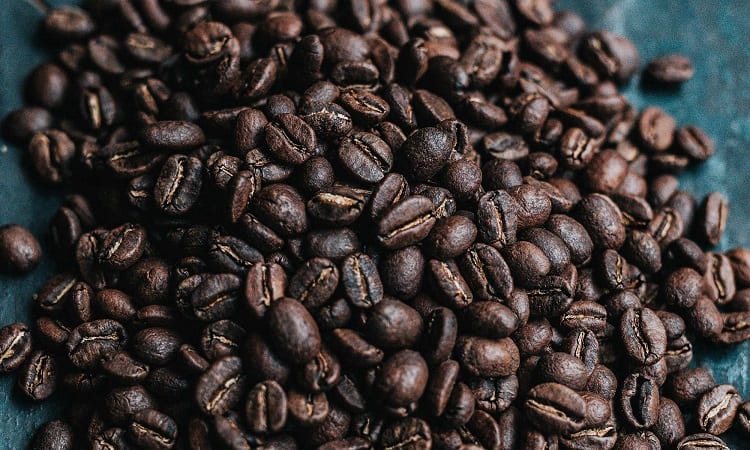
Liberian coffee is something that’s very difficult to work with.
While it makes up 1% of the world’s coffee, the harder shell on the outside of each bean makes it hard for burr and blade grinders to piece it.
Liberian coffee often comes in bigger beans, because the plants can grow more than three times as tall at robusta plants (somewhere around 18-20 ft in total).
Because Liberian coffee requires such a specific and humid environment to grow in, it exclusively comes out of West Africa.
How do Big Companies Grind Their Coffee?
They follow a specific chart of ground sizes and consistency.
You end up falling in love with a specific brand of coffee, pre-ground or not because it’s always exactly the same. It’s good, you enjoy it, and they don’t change a thing about that.
But they have standards in place to make sure that your first or five-hundredth bag will taste the same. It’s about brand loyalty and consistency.
Big companies that retail the ground coffee to you will use a series of large hopper grinders that continuously grind up pounds and pounds of coffee all day long.
This can be a little off-putting because burrs will move throughout use and need to be readjusted for grind size from time to time.
Or, they roast the beans and sell them in vacuum-sealed bags.
If you’ve ever bought a bag of roasted coffee beans to grind up at home, you’ve probably noticed the little seal on the front of the bag that lets you pull more air out from the bag.
Big companies like Dunkin’ will get coffee beans in sealed, light-proof bags from their own branded distributor, and they’ll be ground up for each pot of coffee.
The grinds are compared to something called a quality sample, which is a can of perfectly measured grinds with the most accurate-sized grounds possible.
You compare a half teaspoon of your grinds to it, and if it flies, then you get to brewing.
When you buy pre-ground coffee, it spends a few days in bags before it ships, then it’s in a distribution center, then a store, and when you buy it.
You’ll have that bag for a few weeks, meaning overall, your coffee is ground up for about two months.
It’s recommended to use coffee beans within fifteen minutes of grinding them. That’s quite a bit of a jump.
How Fine Should Your Coffee Grinds Be?
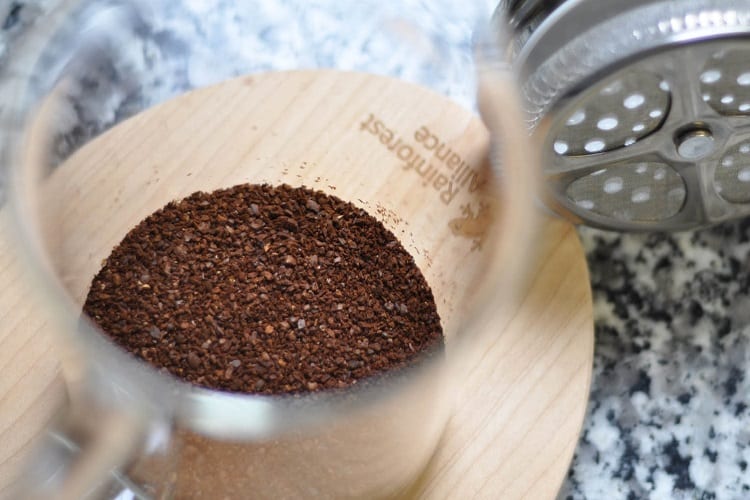
This comes down to how you brew it. If you haven’t already, check out our ultimate guide on coffee brewing.
If you’re using a percolator, you need ultra-fine grounds. If you’re using a French press, you need bigger, slightly bulkier grounds; it’s going to rely on that, first and foremost.
But let’s talk about the average grind size that your coffee should be. If you’re using a normal drip feed system, you’re going to want consistently sand-sized grinds.
If you pick up a grain of sand and inspect it, it’s the same size you should opt for in your coffee grounds.
Not fine like a powder; just coarse enough to feel it glide between your fingertips as you knead it with your hands.
So what’s the point of this?
Well, it comes down to the surface area that your hot water comes into contact with.
If you have a lot of bulky, chunky grounds, then the water is going to run through them all differently. This doesn’t produce a consistent flavor.
That’s where the debate of blade versus burr grinders come into play. We talked about these earlier, but let’s discuss when you should be using one or the other.
If you’re brewing with a French press or another direct water-to-ground brewing method, you can use a blade grinder.
It’s inconsistent, but it gives you a mix of bigger chunks, medium grain-sized pieces like we want with a burr, and a bit of powder at the same time.
Some people enjoy the rough and unpredictable flavor as well.
You would use a burr grinder for drip feed systems, percolators (set to a finer setting), and especially espresso.
Burrs use a grinding method that does its best to chop every bean into the same size, so you’re hitting the most amount of surface area possible without having to guess.
With a consistent grind, you’re getting just enough coffee essence out of the grounds without getting that bitter flavor.
That means you’ll get about 90% of all the caffeine in your grounds (sometimes more), and a smooth, agreeable flavor that wouldn’t be described as overly bold.
How Expensive Are Coffee Grinders?
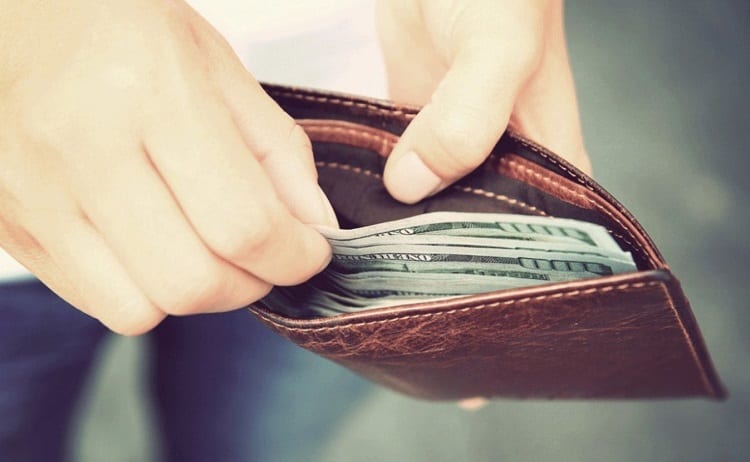
That depends on what you’re willing to work with.
A handheld manual coffee grinder, even a handheld burr grinder, can cost you less than a new auto-drip coffee pot, being under thirty bucks.
For electric units you can just flip a switch, have it measure everything out for you, and control the grind size automatically.
When you get to electric units, you’re looking at around fifty dollars for decent units.
If you want a big grinder that won’t require much maintenance, like the ones they use in coffee shops, you can expect to spend between five hundred and seven hundred dollars.
I personally don’t know anybody who’s getting a Bunn commercial grinder though.
Even on the higher end of the range, you can find high-quality grinders for around one hundred to two hundred, and some of those are even two-in-one grind and brew systems.
How Long Does it Take to Grind Coffee?
That all depends on what type of grinder you’re using.
A blade grinder will take about ten seconds to chop up your coffee beans (for a French press), and a little more time for other methods of brewing, but rarely more than thirty seconds.
Burr grinders can take about six seconds depending on their strength, and the total amount of coffee that’s going to be dispersed through the bottom.
That’s just for the actual act of grinding, though. There are other time-based facts to consider.
It’s much easier and quicker to just open a can of pre-ground coffee in the morning when you’re making your brew.
You can’t, or at least shouldn’t, pre-grind coffee beans unless you plan on using them within fifteen minutes.
This makes them fairly useless if you tend to leave your automatic coffee maker on the timer function to brew for you as you wake up in the morning.
Then there’s also a grinder to clean, additional storage bins for run-off excess coffee, and the fact that you have to weigh your coffee so you know how much you’re supposed to put in.
Overall, for someone who’s just starting out, it would take you about three to five minutes to grind your coffee, dust off the grinder, and put it away.
Once a week, you should clean your grinder out, whether it’s a blade or a burr. From there, you have to clean up any mess you make while grinding (and there will be some degree of a mess).
It’s a slightly lengthy process, but if you really enjoy the flavor of your morning cup of coffee, it’s completely worth it.
If you like the taste, but time isn’t on your side, consider hand grinding your own coffee on weekends, and using pre-ground blends during the weekdays if you’ve got a busy schedule.
A little bit of the best of both worlds.
The Importance of Having a Consistent Grind
Having your own ground coffee is a matter of choosing quality over convenience every single time.
If you don’t have the time to actually grind your coffee in the morning, consider grinding once after dinner and storing the beans in an airtight canister until the next morning.
Every time you grind your own coffee, it’s going to come out better and have more flavor.
Find a way to work it into your schedule, and always remember to try and brew your coffee within fifteen minutes of grinding if you plan on having it right away.